Accessible Health Care Briefs: HEALTH CARE (Clinic/Outpatient) FACILITIES ACCESS
2. b. ii. Accessible Door Hardware
-
Door handles: Inaccessible door hardware (Figure 14 below) can prevent access to medical offices. For example, the handle shown below requires the user to tightly grasp the handle to open the door. People who have limitations in grasping, such as arthritis, find this type of handle difficult or impossible to use. Hardware required for accessible door passage shall be mounted no higher than 48 in (1220 mm) above finished floor. xv
Figure 14 and 15 (top and bottom left) Non-accessible door handles
-
A thumb latch is not accessible because one must grasp the handle and pinch down on the thumb latch at the same time.
-
A round door knob (which requires tight grasping and twisting to operate) or a handle with a thumb latch are also inaccessible and should be modified or replaced, if doing so is readily achievable.
Accessible door handles
-
Figure 16: (left) A loop-type handle is accessible because it can be used without grasping, pinching or twisting.
-
Figure 17 (below) A lever handle is also accessible because it can be operated without a tight grasp, pinching or twisting.
Tip: Close-fist test, try opening the door or operating the control using only one hand, held in a fist; if you can, than the door is usable by a broad range of people. The same is true for faucets, handles, drawer pulls, and vending machine controls.

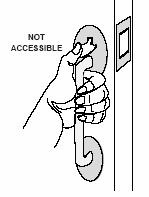
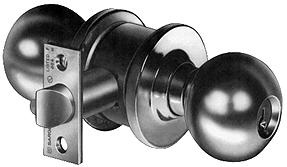
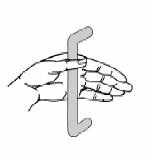
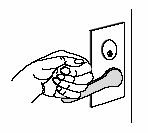
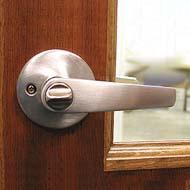
User Comments/Questions
Add Comment/Question